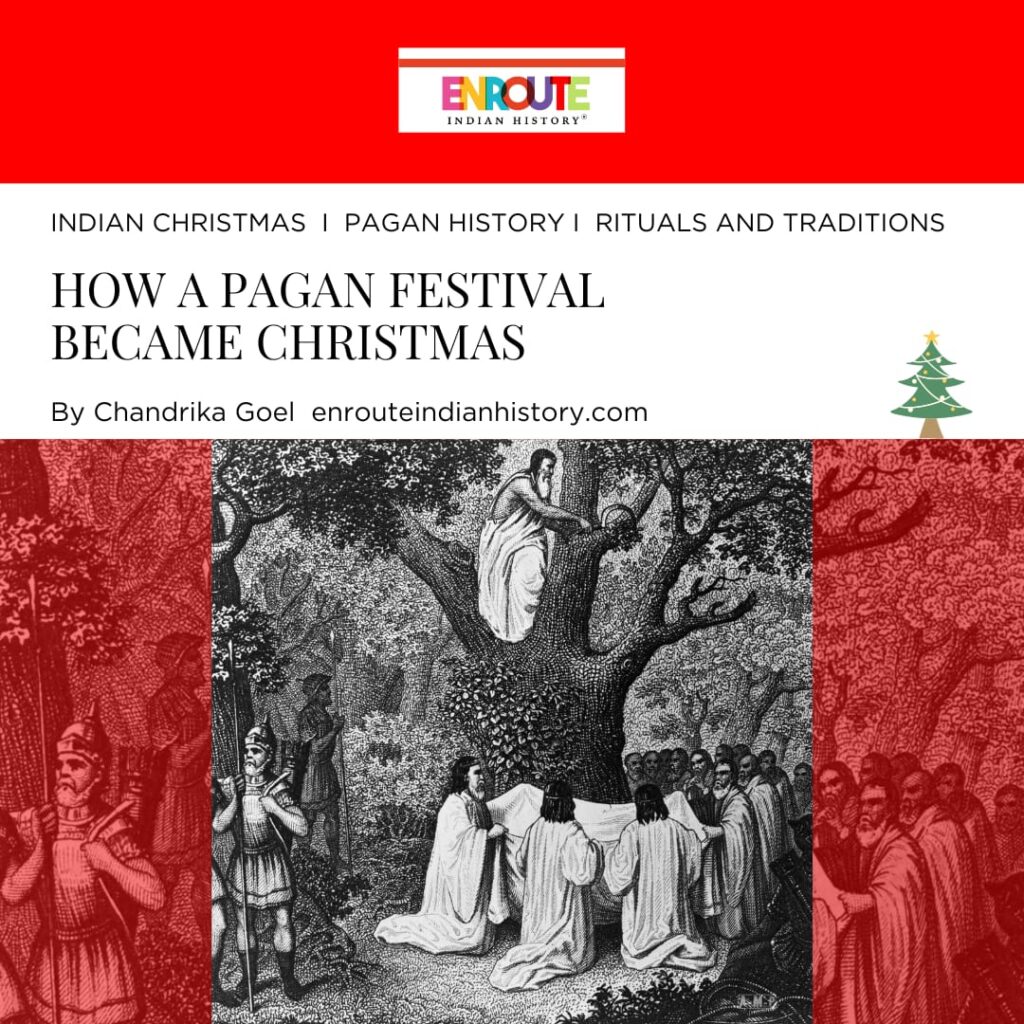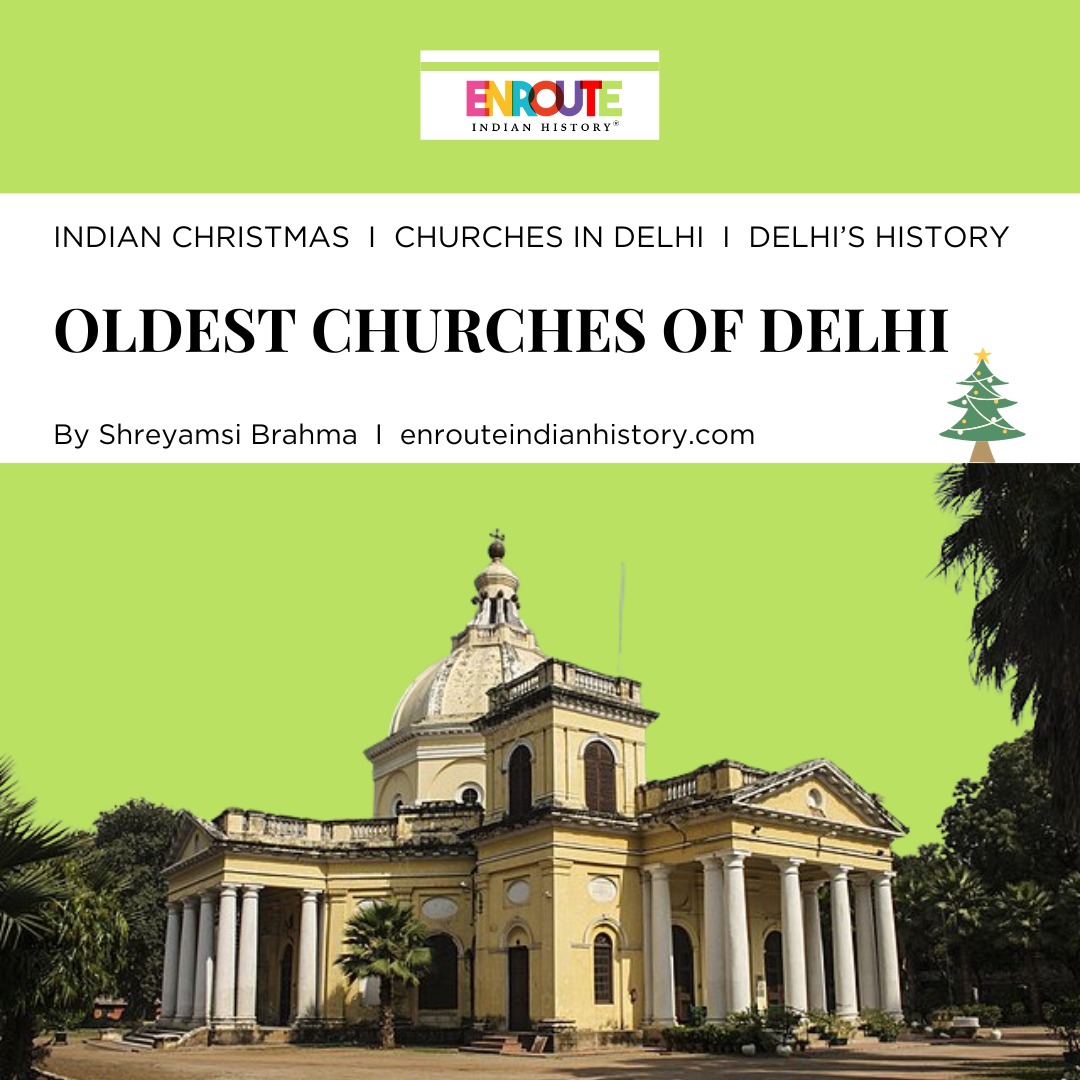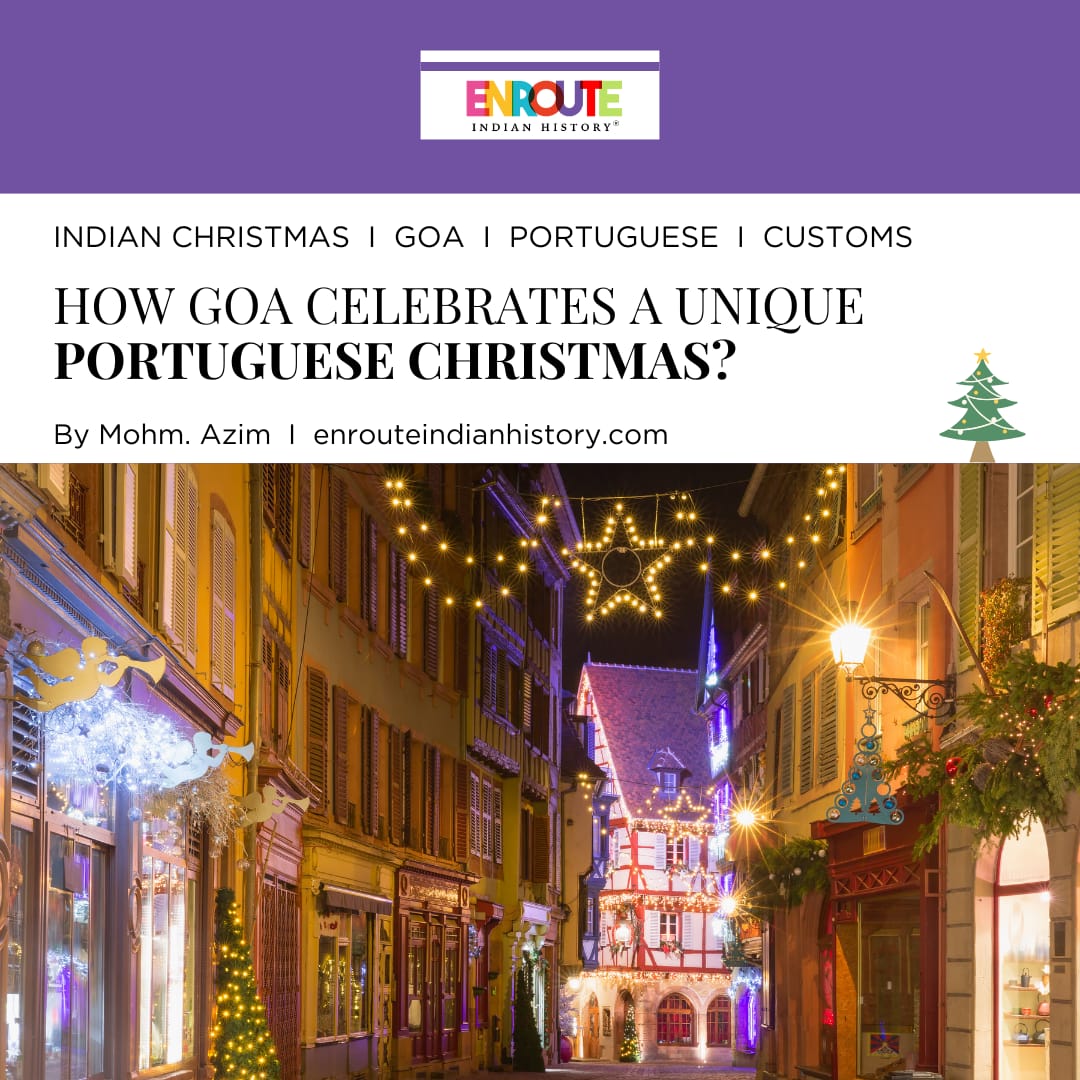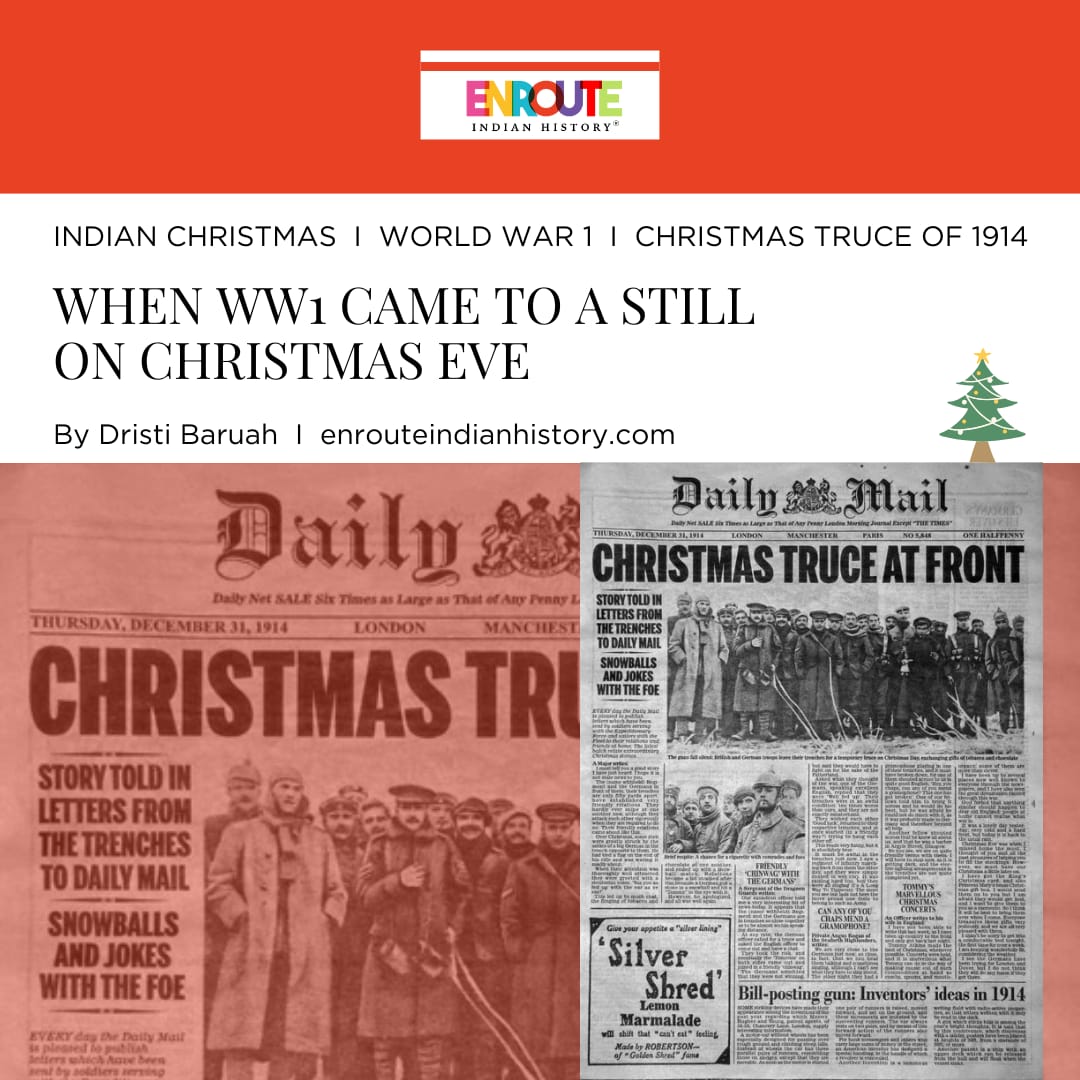
The celebration of Christmas is one of the most widely observed and cherished holidays around the world. It is a time for family, giving, and reflection, but the origins of many Christmas traditions are rooted in ancient pagan rituals. Throughout history, pagan customs and practices have been integrated into Christian celebrations, shaping the modern holiday as we know it today. Various communities love to draw inspirations from different cultures, customs and traditions and Christmas is no exception. The cosy traditions known and loved by people today are not just for Celebrating Christmas. Traditions like sharing a kiss under the mistletoe, carolling, wreaths and even gift giving along with decorating trees, feasting with family and friends, hanging up socks by the fireplace and drinking your self silly are all aspects of pagan holidays that were incorporated into early Christmas celebrations. In fact, most of the cultural aspects associated with Christmas have pagan origins like hanging holly along the hallways. Holly wreaths were also exchanged as gifts by the Romans since it brought prosperity and peace and also trapped fairies in it.
WHO ARE PAGANS?
Pagan is a broad term that includes everyone from the Romans to the Norse of Scandinavia. As Christianity spread throughout Europe in the early ADs, missionaries met a wide range of people with diverse religious systems and beliefs. All of these people and religions were grouped together under the umbrella term “pagan.”
Although Christians sought to spread their religion throughout Europe, they were fascinated by many of the pagans’ customs and ways. Clearly, they were intrigued enough to adopt a few of those beliefs and traditions as part of Christian celebrations!
ORIGINS OF CHRISTMAS
The origins of Christmas can be traced back to ancient pagan festivals held around the winter solstice. In many cultures, the winter solstice was a time to celebrate the sun’s rebirth and the return of light and warmth. As the Christian holiday of Christmas spread throughout Europe, pagan rituals and customs from these winter solstice celebrations were gradually incorporated.
Christmas is influenced by pagan traditions from the Romans cults, Norse, Druids and others. At the time, all of these groups celebrated the winter solstice, which happened to fall around Christmas time. People in northern hemisphere celebrated the winter solstice in the middle of December, which is why Christmas falls around the same time as many existing pagan holidays like Saturnalia and Yule.
SOME PAGAN RITUALS THAT HAVE BECOME CHRISTMAS TRADITIONS
The task of curating and giving gifts on Christmas is a tedious one. Furthermore, not many people know that this tradition is also borrowed from the Saturnalia traditions of the Romans.
The Romans used to celebrate Saturnalia in order to honour the agricultural God, Saturn. They would spend the week of Saturnalia much like we do now, feasting, drinking, giving gifts, and being joyful.
The practice of buying gifts that worth a fortune is very contemporary. The Romans, on the other hand, exchanged small gifts for good luck and in hopes for reaping a bountiful harvest the following year. These gifts were also usually given to a single person. However, giving lucky and prosperous gifts to each other has become a multimillion business in today’s time.
Everyone loves Santa. A pot bellied person sporting a huge white beard and red ensemble is the most popular symbol of Christmas. The image of Santa Claus was developed in the 1930s by Coca-Cola. But the idea of an old man giving gifts to children dates much earlier than that, back to the time of the pagans. St. Nicolas Or Father Christmas, was the Patron saint of the children, the poor and prostitutes. He was known for. His acts of kindness like giving gifts and alms to the poor. St. Nicolas too sported a big beard and long cloak, similar to our favourite Santa today.
Children used to fill their booties with carrots and straw and leave them near their house chimneys. According to the Germanic pagan tribes, a white bearded man named Odin, rode across the sky on his Sleipnir which is an eight legged horse. Odin would then leave gifts for the children. The Sleipnir is very similar to Santa’s reindeers. The tradition of leaving booties filled with goodies is almost same to the tradition of hanging stockings on the chimney.
Everyone’s favourite tradition of sharing a kiss under the mistletoe, surprisingly, is also an integral part of the pagan traditions. The romantic act that brings so many couples together in Hallmark Christmas movies (and sometimes in real life) has its origins in Norse mythology, and the plant itself has had cultural significance for much longer.

PAGAN FERTILITY RITUAL UNDER THE MISTLETOE
Mistletoe was revered by everyone from the Romans and Celts to the Druids and the Norse. It was regarded as a highly sacred plant and was used in a number of pagan rituals. It was associated with the Roman god Saturn. To keep him happy, they would perform fertility rituals beneath mistletoe sprigs. But now it has toned down to just a simple kiss.
And finally, a tradition that everyone loves and cherishes, the decoration process of the Christmas tree. The crowd in ornament shops are a proof of this predicament. Yet again, this ritual goes back to the Roman and the Germanic tribes.

CHILDREN DECORATING A FIR TREE
During Saturnalia, Romans hung small metal ornaments on trees outside their homes in addition to feasting, drinking, and exchanging gifts. Each of these tiny ornaments represented a god, either Saturn or the patron saint of the family. During the winter solstice, early Germanic tribes practiced a similar tree decorating tradition, this time with fruits and candles to honour the god Odin. Christians appeared to have combined tree decorating with ornaments, candles, and fruits to create one extravagant tradition.
Positively, the incorporation of pagan rituals into the Christian celebration of Christmas has resulted in a rich tapestry of customs and traditions that have survived for centuries. These rituals have given people of various backgrounds a sense of continuity and cultural connection, and they have contributed to the festive and joyful atmosphere that surrounds the holiday. Looking ahead, the role of pagan rituals in Christmas tradition is likely to evolve further. The blending of different customs and traditions will become more pronounced as societies become more multicultural and diverse. This presents both challenges and opportunities for Christmas ritual preservation and adaptation.
Pagan rituals have influenced the modern Christmas tradition significantly. From the Yule and the Saturnalia festival to the Christmas tree, these ancient traditions have enriched and complicated the holiday season’s meaning. The influence of Pagan rituals on Christmas tradition is undeniable, whether viewed as a harmonious blending of cultural practices or a dilution of religious significance.
BIBLIOGRAPHY
- https://chefin.com.au/blog/these-6-christmas-traditions-are-actually-pagan-customs/
- https://www.countryliving.com/life/a25319139/mistletoe-meaning-history/
- https://www.history.co.uk/article/the-pagan-roots-of-christmas
- https://www.euronews.com/culture/2021/12/05/merry-saturnalia-which-christmas-traditions-are-actually-pagan
- https://historycollection.com/16-pagan-christmas-traditions-that-people-mistakenly-credit-to-christianity/
- https://www.gotquestions.org/Christmas-traditions.html
- https://www.britannica.com/question/Does-Christmas-have-pagan-roots
IMAGE SOURCES
- https://pin.it/2HPyrgy (Saturnalia)
- https://pin.it/3pWYT0y (coke Santa)
- https://www.countryliving.com/life/a25319139/mistletoe-meaning-history/ (mistletoe)
- https://pin.it/4TGS79J (Christmas tree decorating)
- https://pin.it/1yAxa7o (Christmas gifts)
- December 20, 2023
- 10 Min Read
- December 20, 2023
- 6 Min Read

























